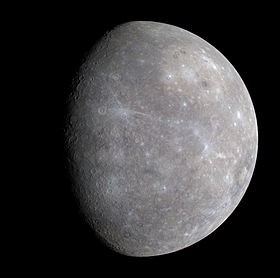

Our solar system is filled with a wide assortment of celestial bodies - the Sun itself, our eight planets, dwarf planets, and asteroids - and on Earth, life itself! The inner solar system is occasionally visited by comets that loop in from the outer reaches of the solar system on highly elliptical orbits. In the outer reaches of the solar system, we find the Kuiper Belt and the Oort cloud. Still farther out, we eventually reach the limits of the heliosphere, where the outer reaches of the solar system interact with interstellar space. Solar system formation began billions of years ago, when gases and dust began to come together to form the Sun, planets, and other bodies of the solar system. Now we are going to study de characteristics of planets.
MERCURY
The closest planet to the sun, Mercury is only a bit larger than Earth's moon. Its day side is scorched by the sun and can reach 840 degrees Fahrenheit (450 Celsius), but on the night side, temperatures drop to hundreds of degrees below freezing. Mercury has virtually no atmosphere to absorb meteor impacts, so its surface is pockmarked with craters, just like the moon. Over its four-year mission, NASA's MESSENGER spacecraft has revealed views of the planet that have challenged astronomers' expectations.

Discovery: Known to the ancients and visible to the naked eye
Named for: Messenger of the Roman gods
Diameter: 3,031 miles (4,878 km)
Orbit: 88 Earth days
Day: 58.6 Earth days
VENUS
The second planet from the sun, Venus is terribly hot, even hotter than Mercury. The atmosphere is toxic. The pressure at the surface would crush and kill you. Scientists describe Venus’ situation as a runaway greenhouse effect. Its size and structure are similar to Earth, Venus' thick, toxic atmosphere traps heat in a runaway "greenhouse effect." Oddly, Venus spins slowly in the opposite direction of most planets.
The Greeks believed Venus was two different objects — one in the morning sky and another in the evening. Because it is often brighter than any other object in the sky — except for the sun and moon — Venus has generated many UFO reports.

Discovery: Known to the ancients and visible to the naked eye
Named for: Roman goddess of love and beauty
Diameter: 7,521 miles (12,104 km)
Orbit: 225 Earth days
Day: 241 Earth days
EARTH
The third planet from the sun, Earth is a waterworld, with two-thirds of the planet covered by ocean. It’s the only world known to harbor life. Earth’s atmosphere is rich in life-sustaining nitrogen and oxygen. Earth's surface rotates about its axis at 1,532 feet per second (467 meters per second) — slightly more than 1,000 mph (1,600 kph) — at the equator. The planet zips around the sun at more than 18 miles per second (29 km per second).

Diameter: 7,926 miles (12,760 km)
Orbit: 365.24 days
Day: 23 hours, 56 minutes
MARS
The fourth planet from the sun, is a cold, dusty place. The dust, an iron oxide, gives the planet its reddish cast. Mars shares similarities with Earth: It is rocky, has mountains and valleys, and storm systems ranging from localized tornado-like dust devils to planet-engulfing dust storms. It snows on Mars. And Mars harbors water ice. Scientists think it was once wet and warm, though today it’s cold and desert-like.
Mars' atmosphere is too thin for liquid water to exist on the surface for any length of time. Scientists think ancient Mars would have had the conditions to support life, and there is hope that signs of past life — possibly even present biology — may exist on the Red Planet.
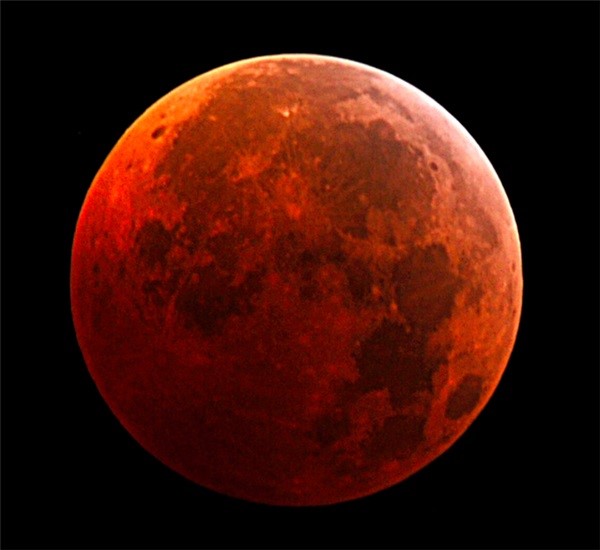
Discovery: Known to the ancients and visible to the naked eye
Named for: Roman god of war
Diameter: 4,217 miles (6,787 km)
Orbit: 687 Earth days
Day: Just more than one Earth day (24 hours, 37 minutes)
JUPITER
The fifth planet from the sun, Jupiter is huge and is the most massive planet in our solar system. It’s a mostly gaseous world, mostly hydrogen and helium. Its swirling clouds are colorful due to different types of trace gases. A big feature is the Great Red Spot, a giant storm which has raged for hundreds of years. Jupiter has a strong magnetic field, and with dozens of moons, it looks a bit like a miniature solar system.
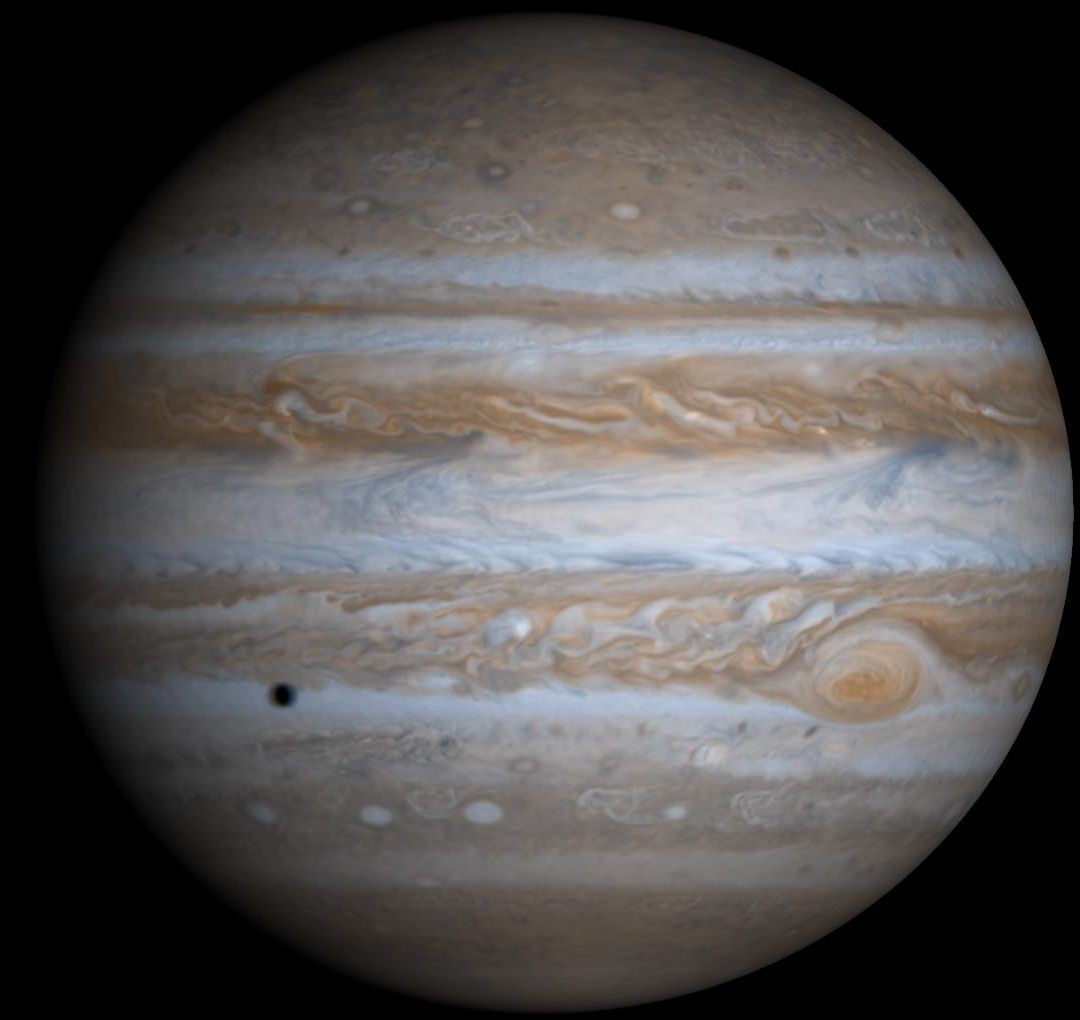
Discovery: Known to the ancients and visible to the naked eye
Named for: Ruler of the Roman gods
Diameter: 86,881 miles (139,822 km)
Orbit: 11.9 Earth years
Day: 9.8 Earth hours
SATURN
The sixth planet from the sun is known most for its rings. When Galileo Galilei first studied Saturn in the early 1600s, he thought it was an object with three parts. Not knowing he was seeing a planet with rings, the stumped astronomer entered a small drawing — a symbol with one large circle and two smaller ones — in his notebook, as a noun in a sentence describing his discovery. More than 40 years later, Christiaan Huygens proposed that they were rings. The rings are made of ice and rock. Scientists are not yet sure how they formed. The gaseous planet is mostly hydrogen and helium. It has numerous moons.
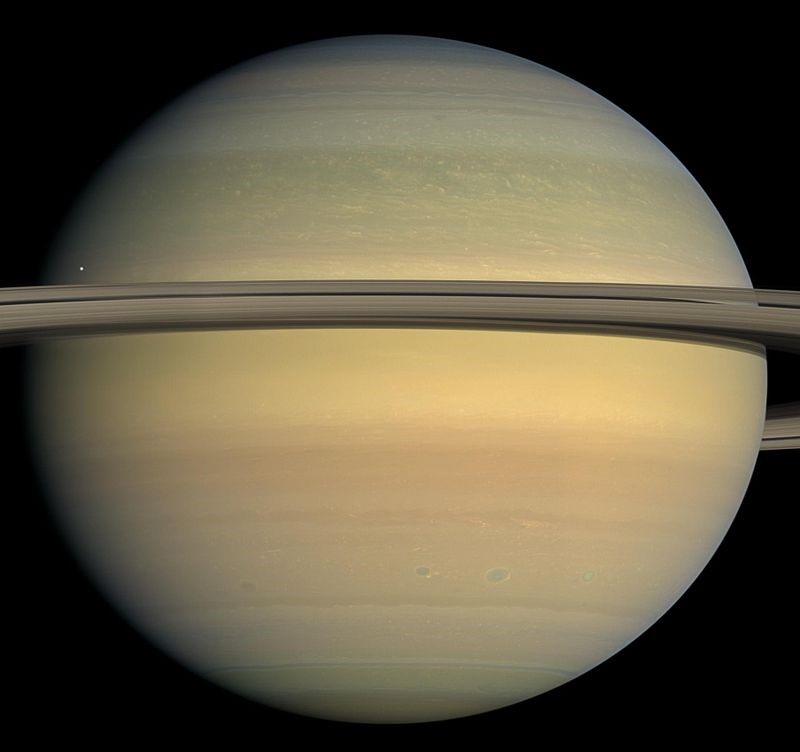
Discovery: Known to the ancients and visible to the naked eye
Named for: Roman god of agriculture
Diameter: 74,900 miles (120,500 km)
Orbit: 29.5 Earth years
Day: About 10.5 Earth hour
URANUS
The seventh planet from the sun, Uranus is an oddball. It’s the only giant planet whose equator is nearly at right angles to its orbit — it basically orbits on its side. Astronomers think the planet collided with some other planet-size object long ago, causing the tilt. The tilt causes extreme seasons that last 20-plus years, and the sun beats down on one pole or the other for 84 Earth-years. Uranus is about the same size as Neptune. Methane in the atmosphere gives Uranus its blue-green tint. It has numerous moons and faint rings.
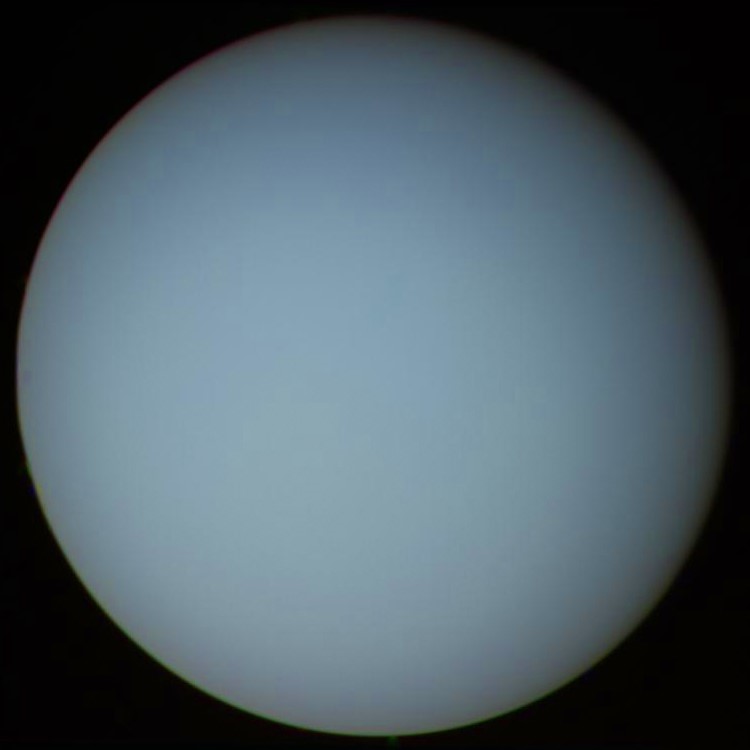
Discovery: 1781 by William Herschel (was thought previously to be a star)
Named for: Personification of heaven in ancient myth
Diameter: 31,763 miles (51,120 km)
Orbit: 84 Earth years
Day: 18 Earth hours
NEPTUNE
The eighth planet from the sun, Neptune is known for strong winds — sometimes faster than the speed of sound. Neptune is far out and cold. The planet is more than 30 times as far from the sun as Earth. It has a rocky core. Neptune was the first planet to be predicted to exist by using math, before it was detected. Irregularities in the orbit of Uranus led French astronomer Alexis Bouvard to suggest some other might be exerting a gravitational tug. German astronomer Johann Galle used calculations to help find Neptune in a telescope. Neptune is about 17 times as massive as Earth.
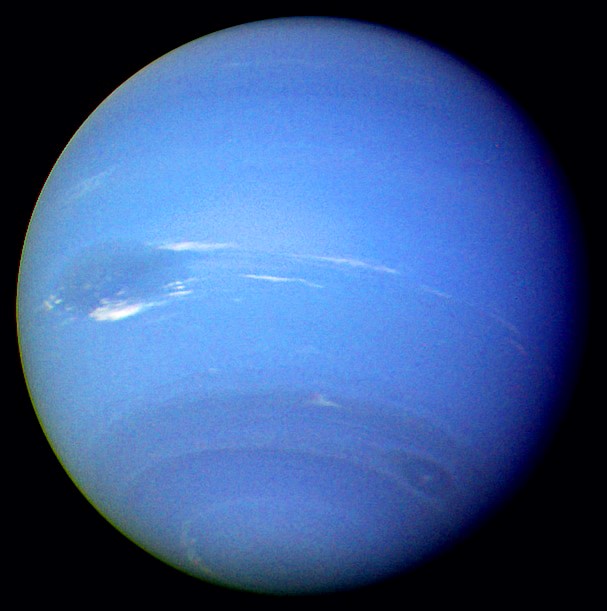
Discovery: 1846
Named for: Roman god of water
Diameter: 30,775 miles (49,530 km)
Orbit: 165 Earth years
Day: 19 Earth hours
PLUTO (DWARF PLANET)
Once the ninth planet from the sun, Pluto is unlike other planets in many respects. It is smaller than Earth's moon. Its orbit carries it inside the orbit of Neptune and then way out beyond that orbit. From 1979 until early 1999, Pluto had actually been the eighth planet from the sun. Then, on Feb. 11, 1999, it crossed Neptune's path and once again became the solar system's most distant planet — until it was demoted to dwarf planet status. Pluto will stay beyond Neptune for 228 years. Pluto’s orbit is tilted to the main plane of the solar system — where the other planets orbit — by 17.1 degrees. It’s a cold, rocky world with only a very ephemeral atmosphere. NASA's New Horizons mission performed history's first flyby of the Pluto system on July 14, 2015.
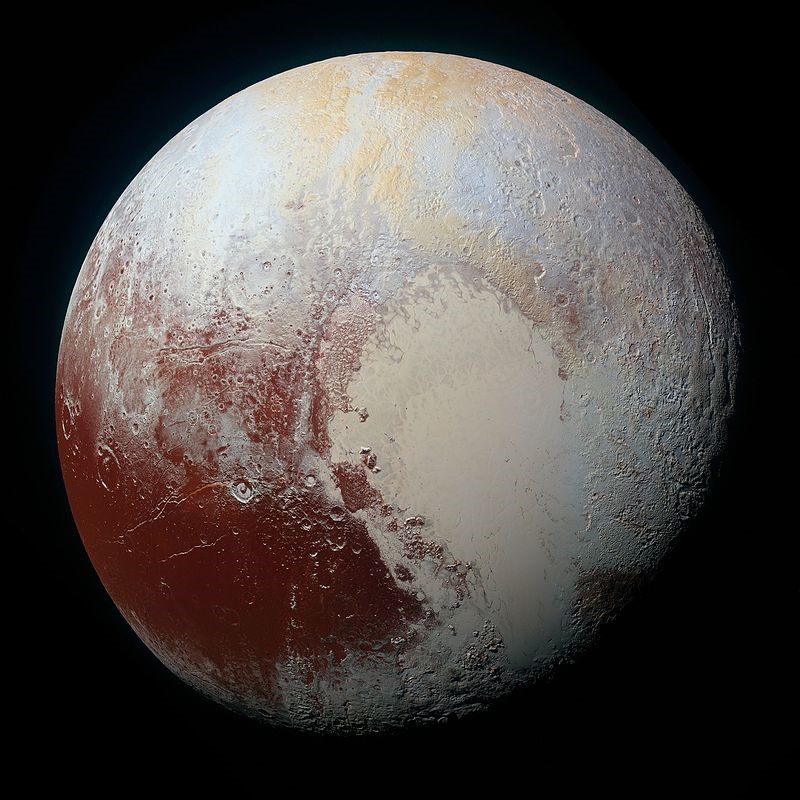
Discovery: 1930 by Clyde Tombaugh
Named for: Roman god of the underworld, Hades
Diameter: 1,430 miles (2,301 km)
Orbit: 248 Earth years
Day: 6.4 Earth day
© Copyleft 2016, Content and Language Integrated Learning and ICT Group